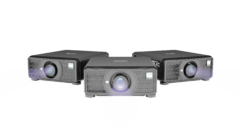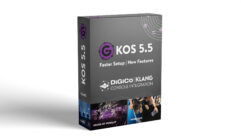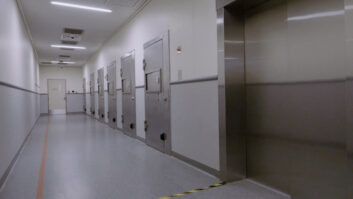

5 Minute Interview: Henk Coppens, Philip Digital Projection Lighting
Philips Digital Projection Lighting produces Ultra High Pressure bulbs used in everything from projectors to videowalls. The company supplies lamp systems to such manufacturers as NEC, Sanyo, and Sony. Increasingly, the bulbs that go into those systems are being counterfeited?a problem affecting many AV manufacturers.
The gap between the end-users’ need for available, timely, quality products and fair pricing was recognized by a number of distributors and “copy”–mainly Asian–manufacturers. The distribution landscape started to change from 2005 onwards, when lamp specialists developed and gained market share from the traditional service centers. This included legitimate players who were negotiating with all manufacturers to serve a broad portfolio of lamp types. However, players also arose that sourced low-quality, sometimes dangerous lamps from illegitimate sources and sold whatever they had available at a specific point in time.
PRO AV: How have counterfeits come to your attention?
Henk Coppens
Philips Digital Projection Lighting produces Ultra High Pressure bulbs used in everything from projectors to videowalls. The company supplies lamp systems to such manufacturers as NEC, Sanyo, and Sony. Increasingly, the bulbs that go into those systems are being counterfeited–a problem affecting many AV manufacturers (see “Counterfeit AV”). Henk Coppens, CEO of Philips’ Special Lighting Applications Business Group, e-mailed answers to Pro AV’s questions.
PRO AV: Can you describe the market for counterfeit lamps?
COPPENS: In the past years, the projection industry has been pushing performance levels up and cost levels down with great speed. The lamp systems inside are one of the main solutions enabling this. Therefore many new generations of lamps have been developed and released into the market, often tailor-made for the specific projector model. The resulting diversity made the aftermarket a complex exercise resulting in thousands of different replacement module types. Also, a severe shortage in lamp supply in the years 2000 to 2004 created unfulfilled demand in the aftermarket.
COPPENS: Based on our estimates and research, compatible products entered the market by 2005 and gained significant market share in 2007. Counterfeiting came to our attention in various ways such as via our ODM [original design manufacturer] customers that notified us of offerings from illegitimate companies; through our benchmark program, where we order and investigate ranges of lamps; through market investigations; and also through active programs run by our intellectual property and standards department.
Our intellectual property and standards department is notified by customs when potential counterfeit products are exported. In Eastern Europe a batch of counterfeit Philips UHP lamps was detained by customs. Evidence showed that the target lamps were from a company in Asia that had facilities to manufacture and counterfeit our lamps. This facility was closed.
PRO AV: Why has the counterfeiting problem gotten worse?
COPPENS: We learned that the counterfeiting segment’s market share increases mainly because of ongoing availability-price issues created by the complex, traditional value chain, and because of increased demand for replacement modules.
However there are big differences in regional profiles. In Europe, for example, the counterfeit product percentage is quite stable and relatively low as distribution values the strong relationship with the projector manufacturers. More importantly the products are clearly segmented and offered as a choice to the end-user.
In the U.S., copy products take a large share but those products are often offered as original. For the end-user it’s more diffuse and unclear what product he or she is actually buying.
PRO AV: What problems could counterfeit lamps cause?
COPPENS: Foremost, unsatisfactory or even unsafe situations can occur. Projection lamps are ultra high pressure lamps that are prone to bulb rupture over their life. Original lamp systems are tested in sets before market release and as such, are safe in operation. When lamps are not rightly designed, manufactured, and tested, one is likely to face increased risk of early failure. Copy lamps are not produced in conjunction with the development of leading projector brands; there is little guarantee that they will work well within the lamp setup of those projectors. Philips commissioned an independent test with international consulting firm KEMA. Those tests concluded that copy bulbs measured far less bright compared to original Philips bulbs. Sometimes only 32 percent of the light is generated with a copy bulb.
Also, the lamps received for the application are often wrong types and difficult or unsafe to install. So the cost saved through the purchase of a copy bulb could well come at the expense of poor performance. Another obvious concern is that the original lamp suppliers are holding intellectual property rights. Anyone selling a lamp that infringes on those rights is at risk of legal proceedings. Finally and maybe most important, such a wide variety of Internet pages exist with different offerings that it is difficult for an end-user to distinguish what it actually is he is buying. Often it is after a few hours of low performance that the end-user is upset with his purchase, sometimes not even knowing that it was not an original lamp he bought.
PRO AV: How is the company fighting counterfeiting?
COPPENS: The challenge faced by the original players was and still is how to change the “spare parts” value chain into a “consumables” value chain, ensuring cheaper replacements and fulfilling end-user needs.
Philips started by talking to the OEM customers to create awareness about the poor quality lamps coming into the market and to see how aftermarket lamps could be positioned in a different way. Also, Philips’ relationships with specialist trade distributors and the acquisition of Lighting Technologies International, a company active in rear projection television modules, creates a lower cost alternative of replacement modules to the market. By changing the value chain from up to seven steps to three steps, private-label original lamps can be offered to the end-user.










